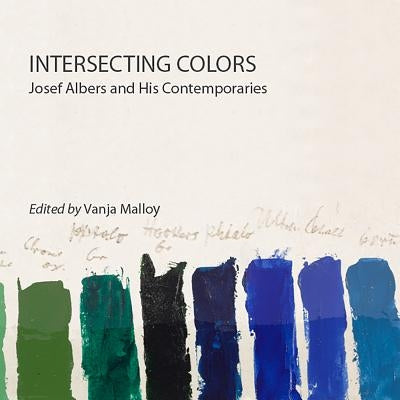1
/
of
1
Amherst College
Intersecting Colors: Josef Albers and His Contemporaries
Intersecting Colors: Josef Albers and His Contemporaries
Regular price
€19,95 EUR
Regular price
Sale price
€19,95 EUR
Shipping calculated at checkout.
Quantity
Couldn't load pickup availability
Josef Albers (1888-1976) was an artist, teacher, and seminal thinker on the perception of color. A member of the Bauhaus who fled to the U.S. in 1933, his ideas about how the mind understands color influenced generations of students, inspired countless artists, and anticipated the findings of neuroscience in the latter half of the twentieth century. With contributions from the disciplines of art history, the intellectual and cultural significance of Gestalt psychology, and neuroscience, Intersecting Colors offers a timely reappraisal of the immense impact of Albers's thinking, writing, teaching, and art on generations of students. It shows the formative influence on his work of non-scientific approaches to color (notably the work of Johann Wolfgang von Goethe) and the emergence of Gestalt psychology in the first decades of the twentieth century. The work also shows how much of Albers's approach to color--dismissed in its day by a scientific approach to the study and taxonomy of color driven chiefly by industrial and commercial interests--ultimately anticipated what neuroscience now reveals about how we perceive this most fundamental element of our visual experience. Edited by Vanja Malloy, with contributions from Brenda Danilowitz, Sarah Lowengard, Karen Koehler, Jeffrey Saletnik, and Susan R. Barry.
Author: Vanja Malloy
Publisher: Amherst College
Published: 09/10/2015
Pages: 108
Binding Type: Paperback
Weight: 0.62lbs
Size: 8.50h x 8.50w x 0.28d
ISBN: 9781943208005
Author: Vanja Malloy
Publisher: Amherst College
Published: 09/10/2015
Pages: 108
Binding Type: Paperback
Weight: 0.62lbs
Size: 8.50h x 8.50w x 0.28d
ISBN: 9781943208005
About the Author
Malloy, Vanja: - Vanja Malloy is the curator of American art at the Mead Art Museum at Amherst College and the organizing editor and curator of Intersecting Colors. She has a longstanding research interest in the intersections of art and science and earned her Ph.D. at the Courtauld Institute of Art for her dissertation, "Rethinking Alexander Calder: Astronomy, Relativity, and Psychology."
This title is not returnable
Share


